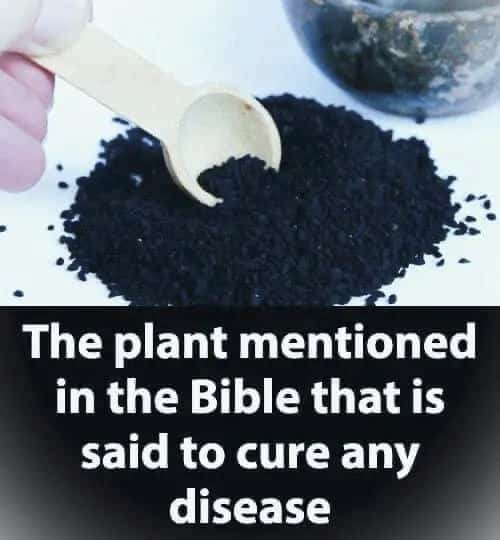For centuries, people have turned to nature in search of remedies, and few plants carry as much mystery and reverence as the Balm of Gilead. Mentioned in the Bible and valued in ancient healing traditions, this remarkable plant-based substance symbolizes both physical restoration and spiritual comfort. But what exactly is the Balm of Gilead? Was it a real plant, and how can its legacy still benefit us today? Let’s uncover its biblical roots, traditional uses, and modern interpretations.
Biblical References to the Balm of Gilead
The Balm of Gilead is highlighted multiple times in Scripture as something precious and powerful:
Jeremiah 8:22
“Is there no balm in Gilead? Is there no physician there? Why then is there no healing for the wound of my people?”
Here, the prophet Jeremiah mourns the suffering of his people, using the balm as a metaphor for both physical cures and spiritual healing.
Jeremiah 46:11
“Go up to Gilead and get balm, Virgin Daughter Egypt. But in vain you will use many medicines; there is no healing for you.”
This verse underscores its reputation as a potent remedy while reminding readers that no earthly cure can replace divine will.
Genesis 37:25
Joseph’s brothers sold him to traders whose caravan carried the balm of Gilead, showing its importance as a prized good in the ancient world.
These references prove that the balm was not only a healing substance but also a symbol of hope and faith.
What Was the Balm of Gilead?
The true identity of the biblical balm has long been debated. Several plants are candidates, each offering healing qualities:
- Commiphora gileadensis (Biblical Balm): Native to the Middle East, this plant produces a fragrant resin similar to frankincense and myrrh, often used in ancient medicine and rituals.
- Poplar Bud Resin (Populus balsamifera): This tree produces sticky buds packed with anti-inflammatory and antiseptic benefits, still used in natural remedies today.
- Other Plants: Some scholars suggest trees like the terebinth or mastic tree may have been sources of the famous balm.
Regardless of its exact species, the balm was treasured for its healing powers and deep symbolic meaning.
Historical Uses of the Balm of Gilead
- Medicine: Applied to wounds, infections, joint pain, and skin conditions. Used to fight inflammation, bacteria, and even respiratory issues like coughs.
- Religious Practices: Incorporated into incense, anointing oils, and temple offerings for its fragrant and purifying properties.
- Trade: Valued as a luxury export that boosted the economy of Gilead, mentioned in Genesis as proof of its worth.
Symbolism of the Balm of Gilead
The balm went beyond medicine—it represented spiritual healing, divine grace, and comfort during suffering.
- Healing and Renewal: A reminder of God’s ability to restore both body and soul.
- Hope in Suffering: Jeremiah’s words used the absence of balm as a metaphor for despair, and its presence as a sign of hope.
- Christian Theology: Many believers see Christ as the ultimate “Balm of Gilead,” offering salvation and eternal healing.
- Cultural Legacy: The phrase “There is a Balm in Gilead” became central to African American spirituals, symbolizing deliverance and faith.
Modern-Day Uses and Inspiration
The Balm of Gilead continues to inspire herbal medicine, spirituality, and culture:
- Herbal Remedies: Salves made from poplar buds are still used for soothing skin, easing pain, and fighting inflammation.
- Spiritual Reflection: The balm remains a symbol in sermons, hymns, and writings that emphasize healing and faith.
- Cultural References: Literature, music, and poetry often use it as a metaphor for comfort, peace, and redemption.
How to Make a Balm of Gilead Salve at Home
Many herbalists recreate their own version of the balm using natural ingredients:
Ingredients:
- 1 cup fresh or dried poplar (or cottonwood) buds
- 1 cup carrier oil (like olive, coconut, or almond oil)
- 1 tablespoon beeswax pellets
Instructions:
- Infuse: Combine the buds and oil in a jar. Seal tightly and leave in a sunny spot for 2–4 weeks, shaking occasionally. Strain out the buds.
- Melt: Warm the infused oil with beeswax in a double boiler until melted.
- Store: Pour into tins or jars and let cool.
- Use: Apply as needed to cuts, scrapes, or irritated skin.
Final Thoughts
The Balm of Gilead remains one of history’s most fascinating remedies, symbolizing the connection between natural healing and spiritual hope. Whether you view it through its biblical mentions, use modern herbal salves, or reflect on its meaning in faith and culture, this legendary balm continues to offer comfort and inspiration even today.
